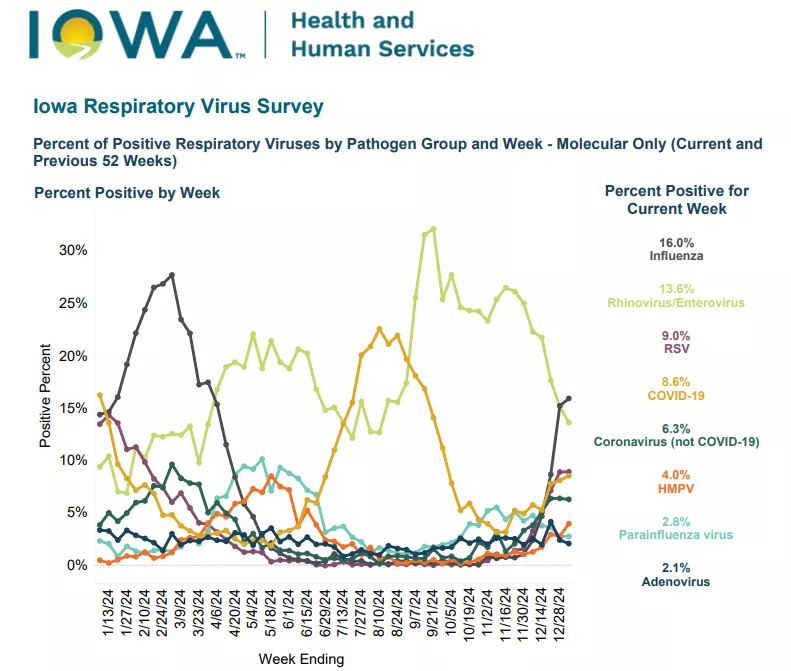
Across most of the country seasonal influenza activity remains elevated with strains of influenza A as the predominant viruses this week according to the Centers for Disease Control. The Iowa Respiratory Virus Surveillance Report shows Iowa’s influenza-like illness activity level rated at high to start the year. The report states the percent of positive tests for the following respiratory viruses by pathogen with influenza at 16%, rhinovirus/enterovirus at 13.6%, RSV at 9%, COVID-19 at 8.6%, coronavirus (not COVID-19) at 6.3%, HMPV at 4%, parainfluenza virus at 2.8%, and adenovirus at 2.1%.
Washington County Public Health Nurse Shelby Hill explains what RSV, the respiratory syncytial virus is, “It’s a virus that commonly our younger population and our older population are most affected by, but you get the very common runny nose, difficulty breathing at times which is the more difficult part of that, fever, dehydration, even lower appetite, and coughing. So that’s kind of our common signs of RSV, which I know sounds very similar to a lot of other respiratory viruses that can go around, but like I said, kind of our very old and our very young are much more vulnerable to those things.”
The most recent report indicates Iowa’s percent of positive influenza and RSV cases as higher than average.
The CDC states getting an annual flu vaccine is a way to help prevent the spread of germs and to help reduce the severity of illness. People are also reminded to cover their coughs and sneezes, wash hands often with soap and water, improve air quality, avoid close contact with people who are sick, and limit contact with others by staying home when you are ill.

